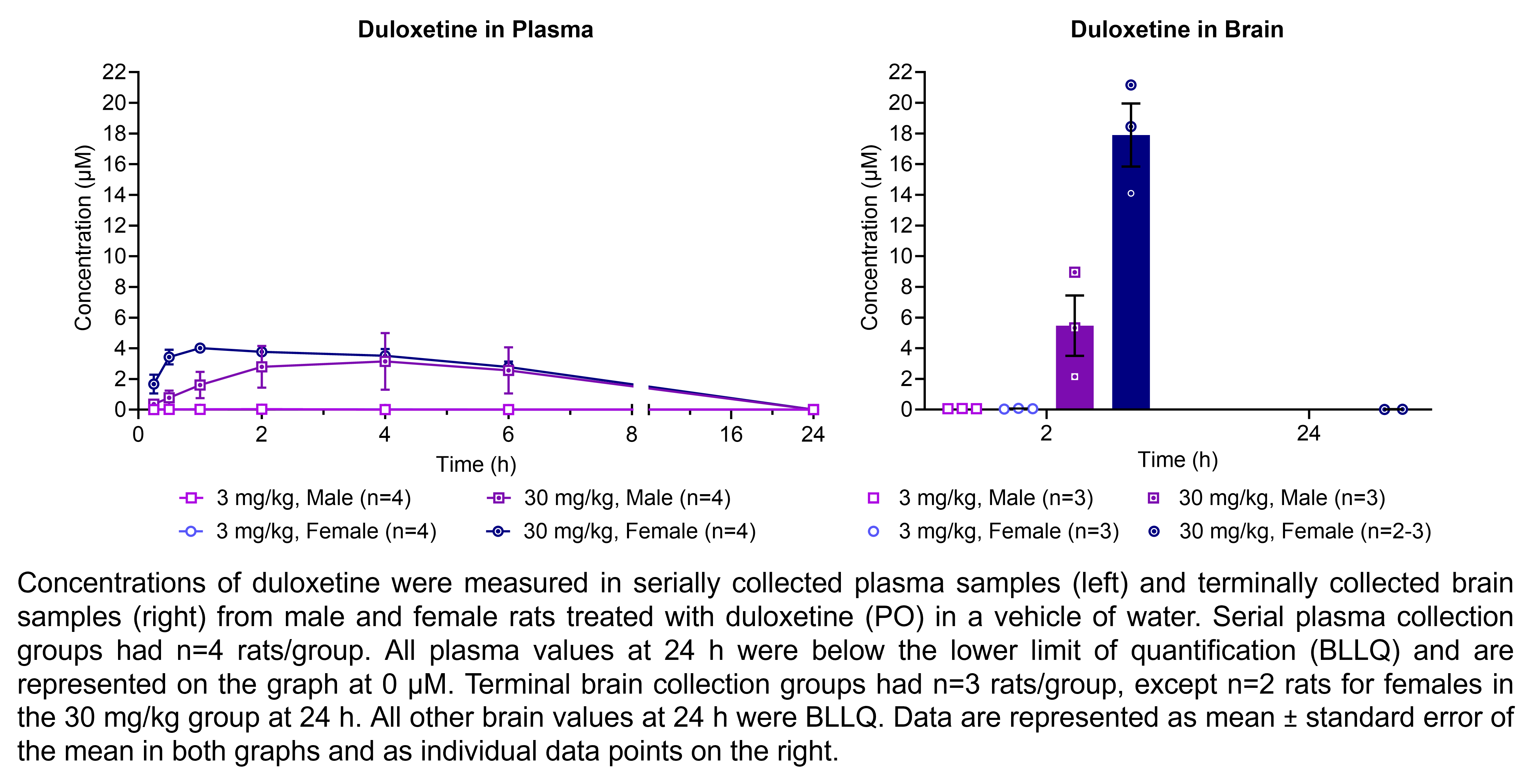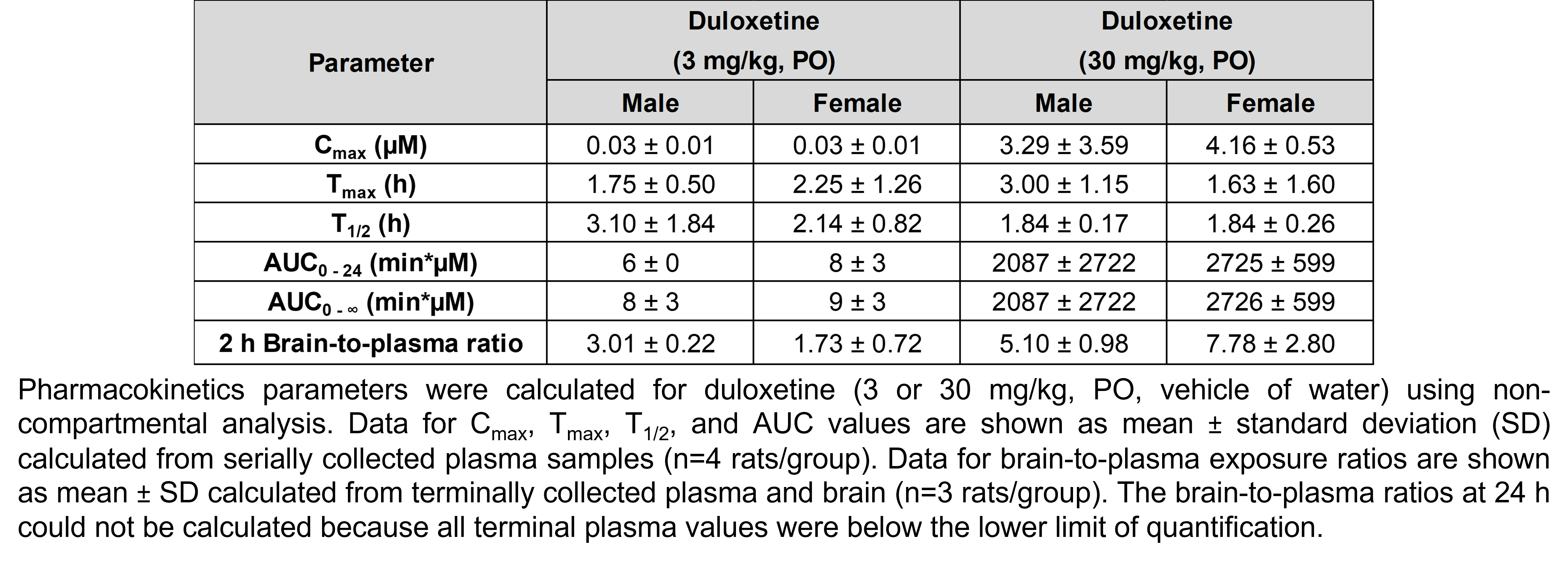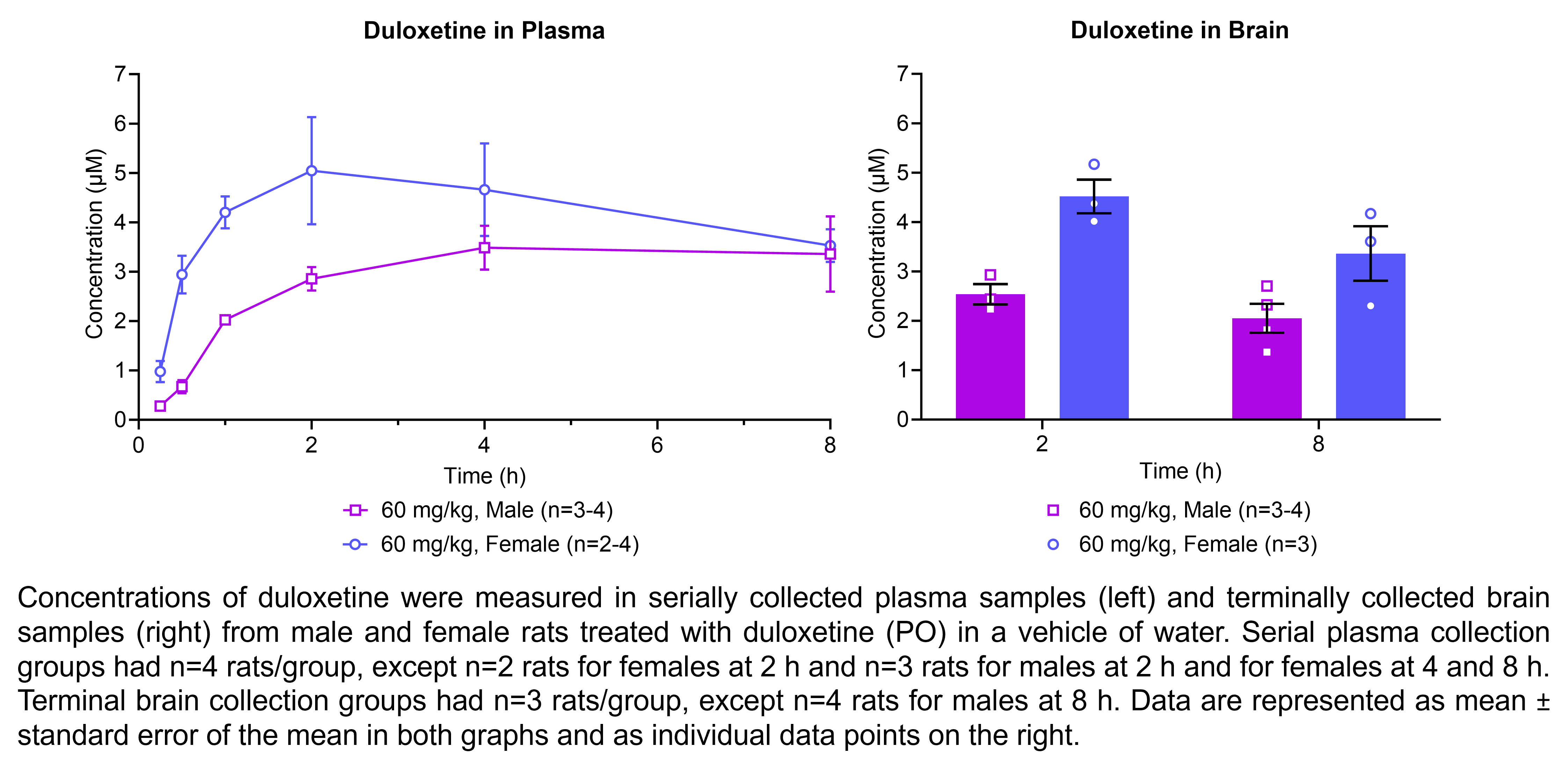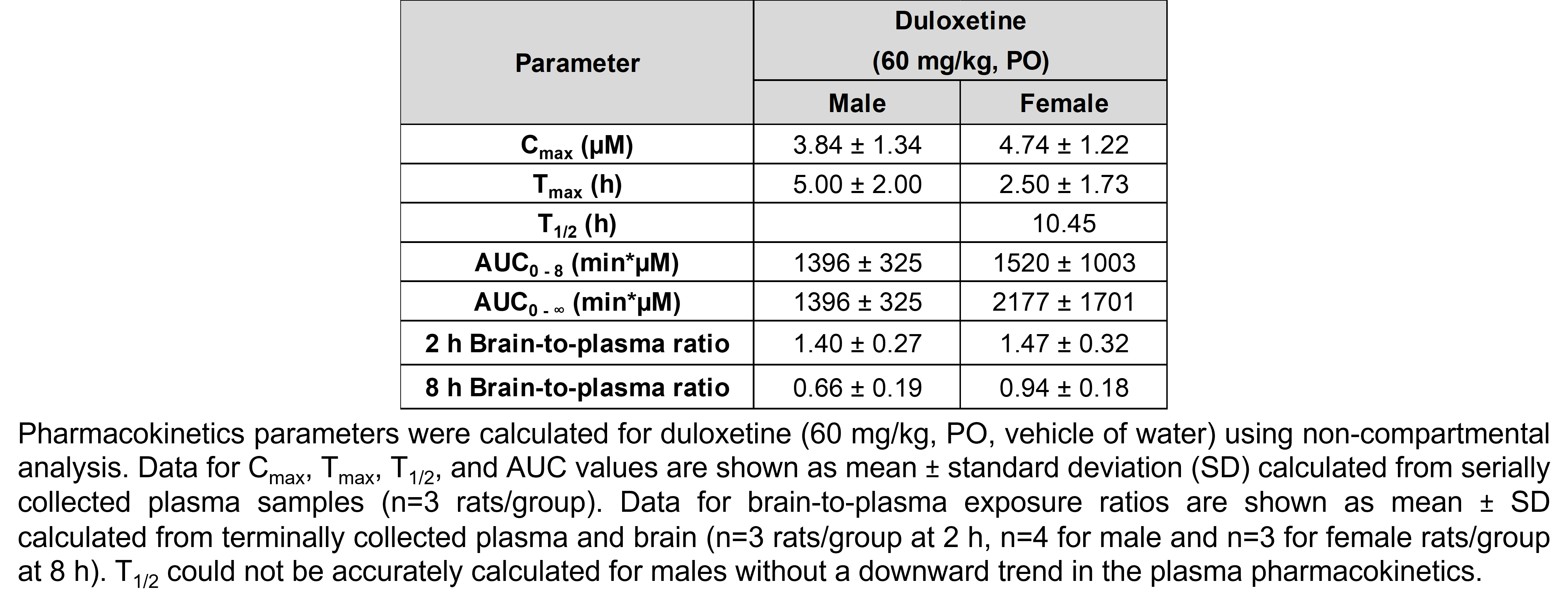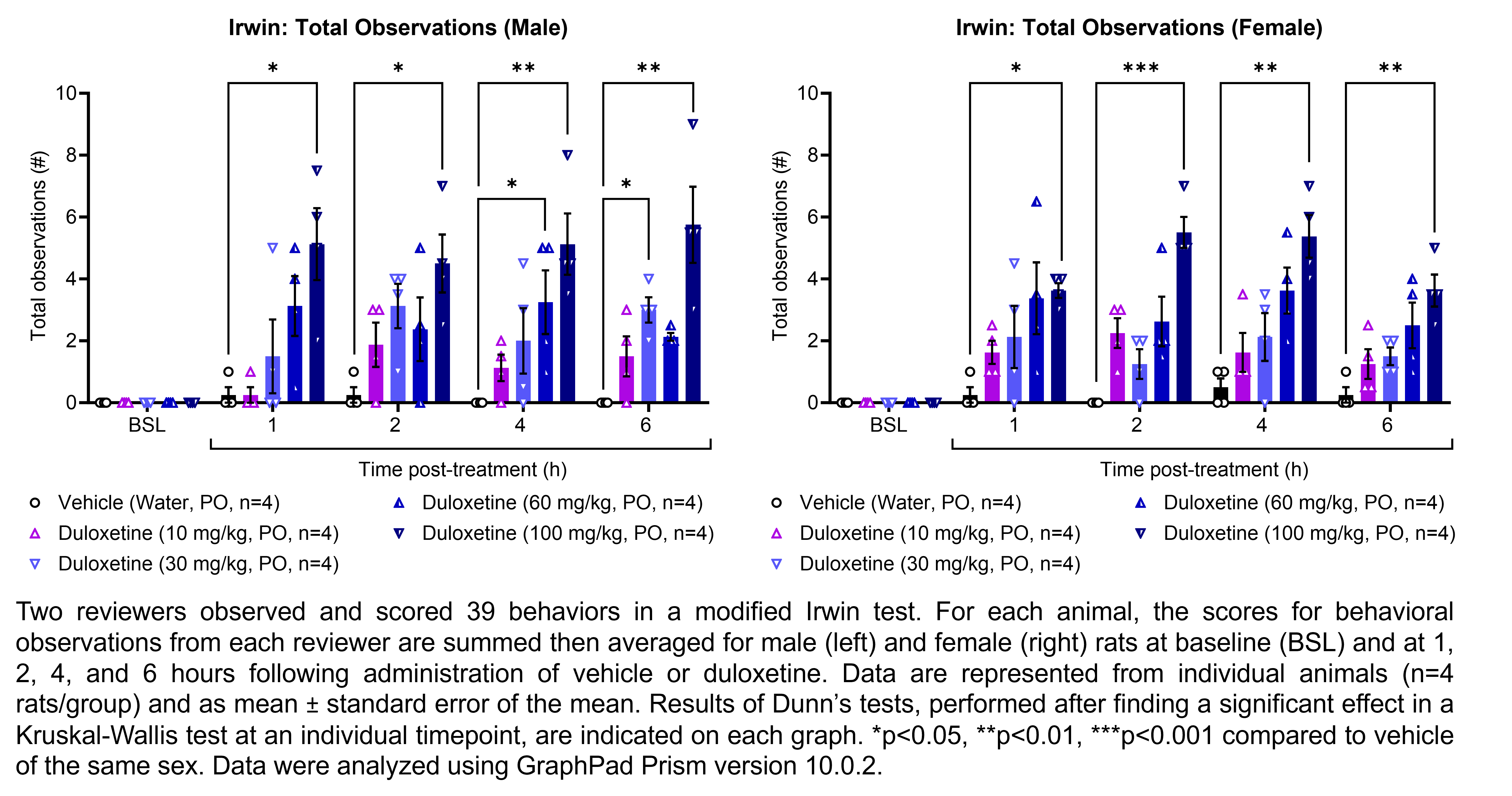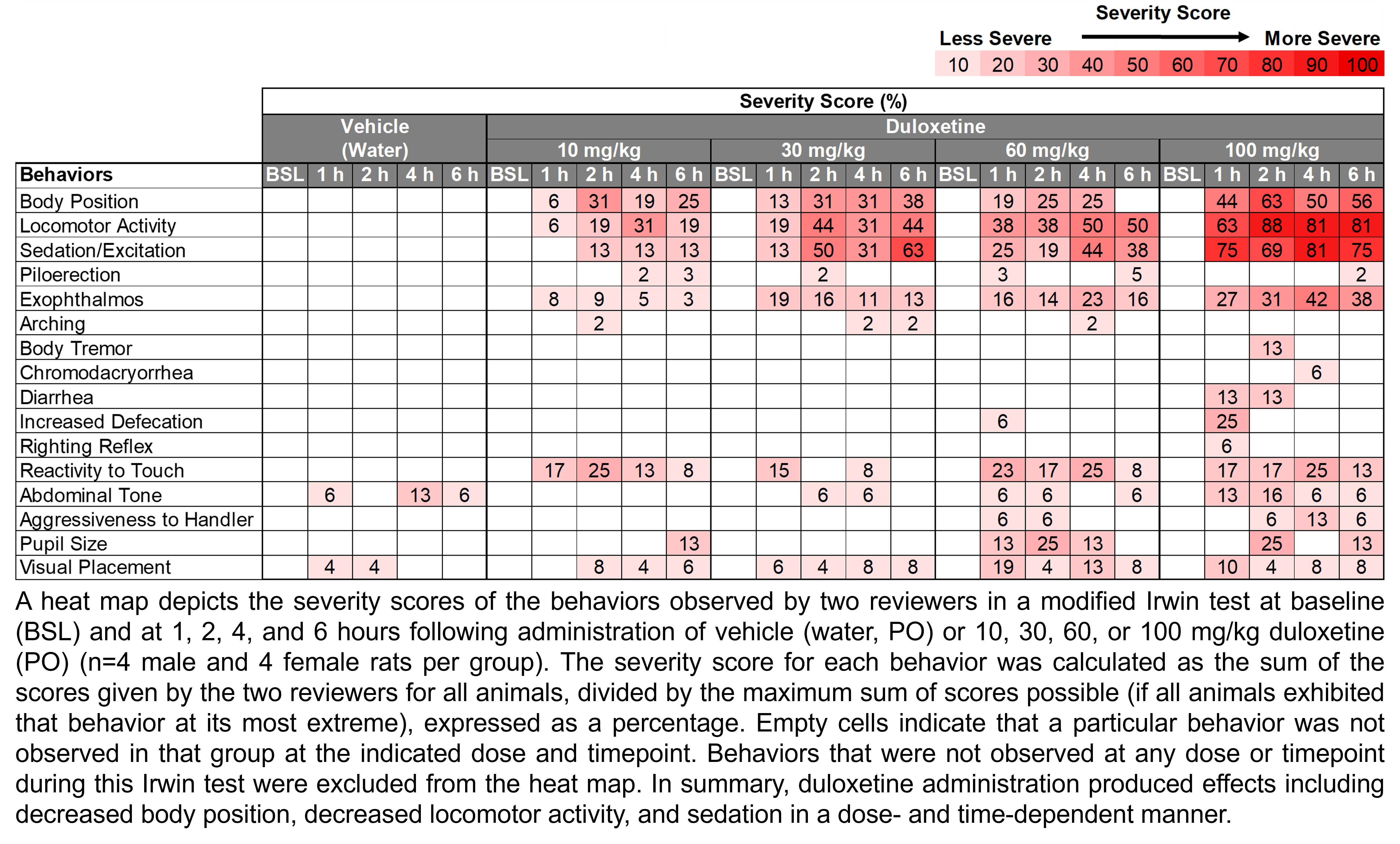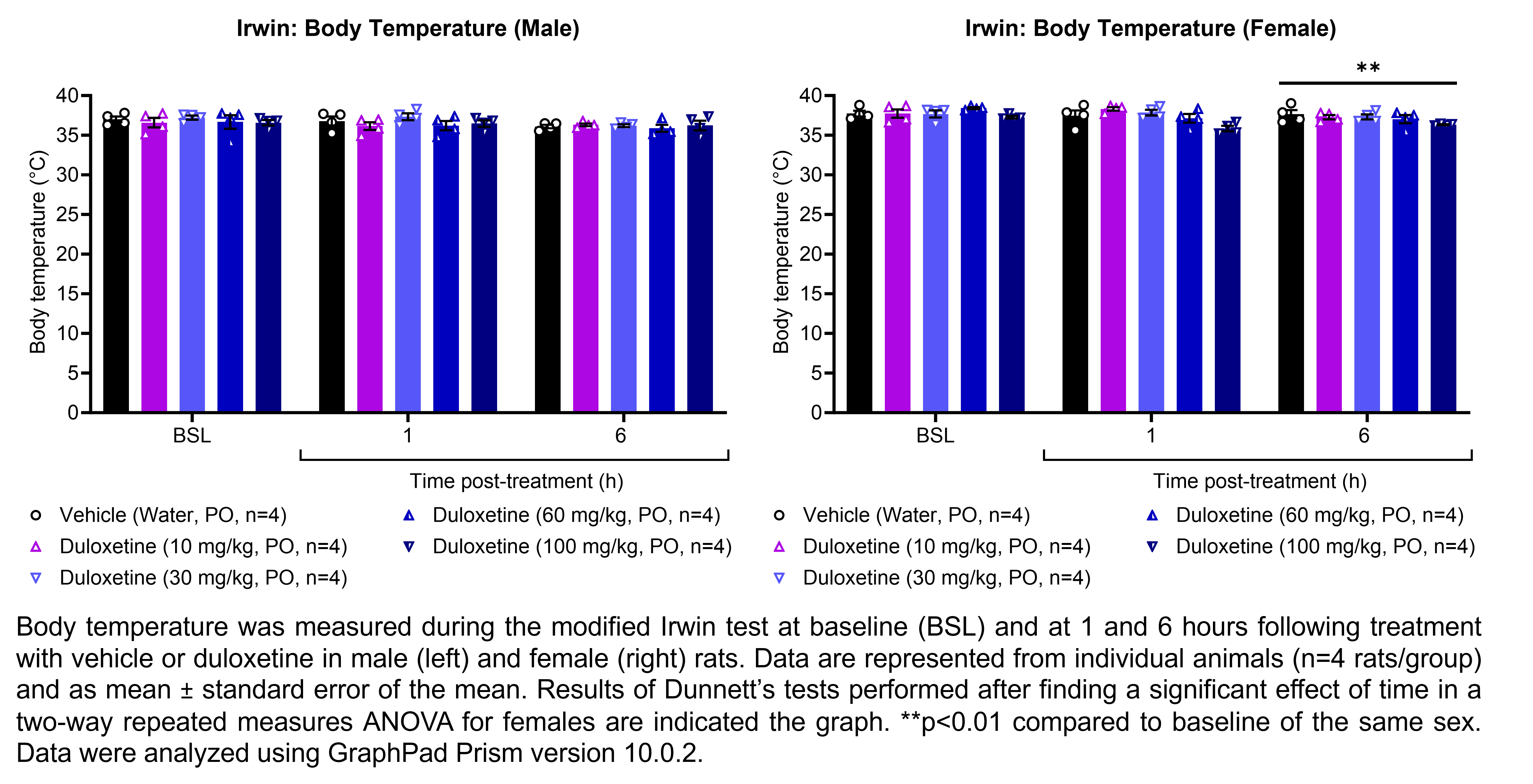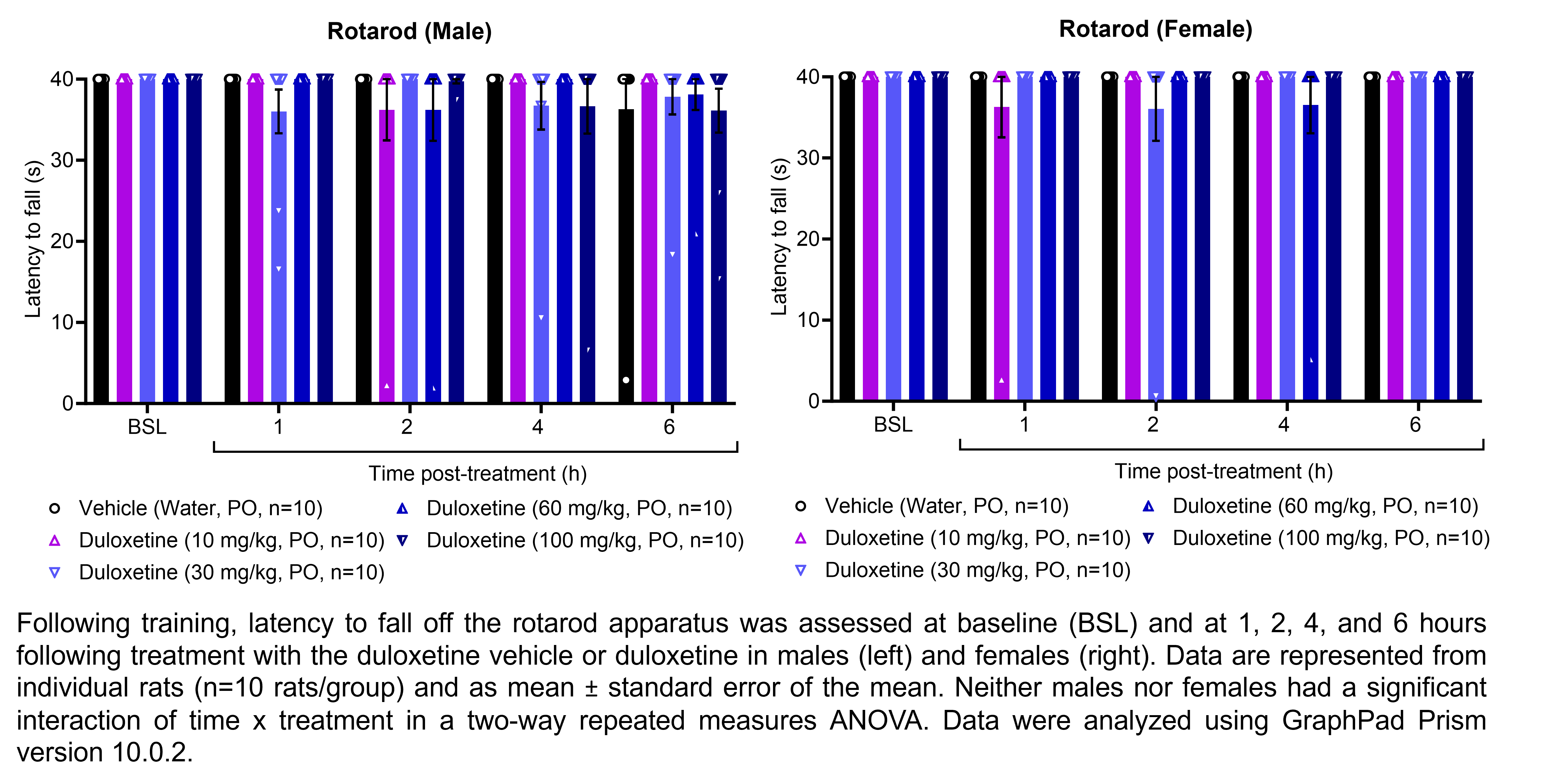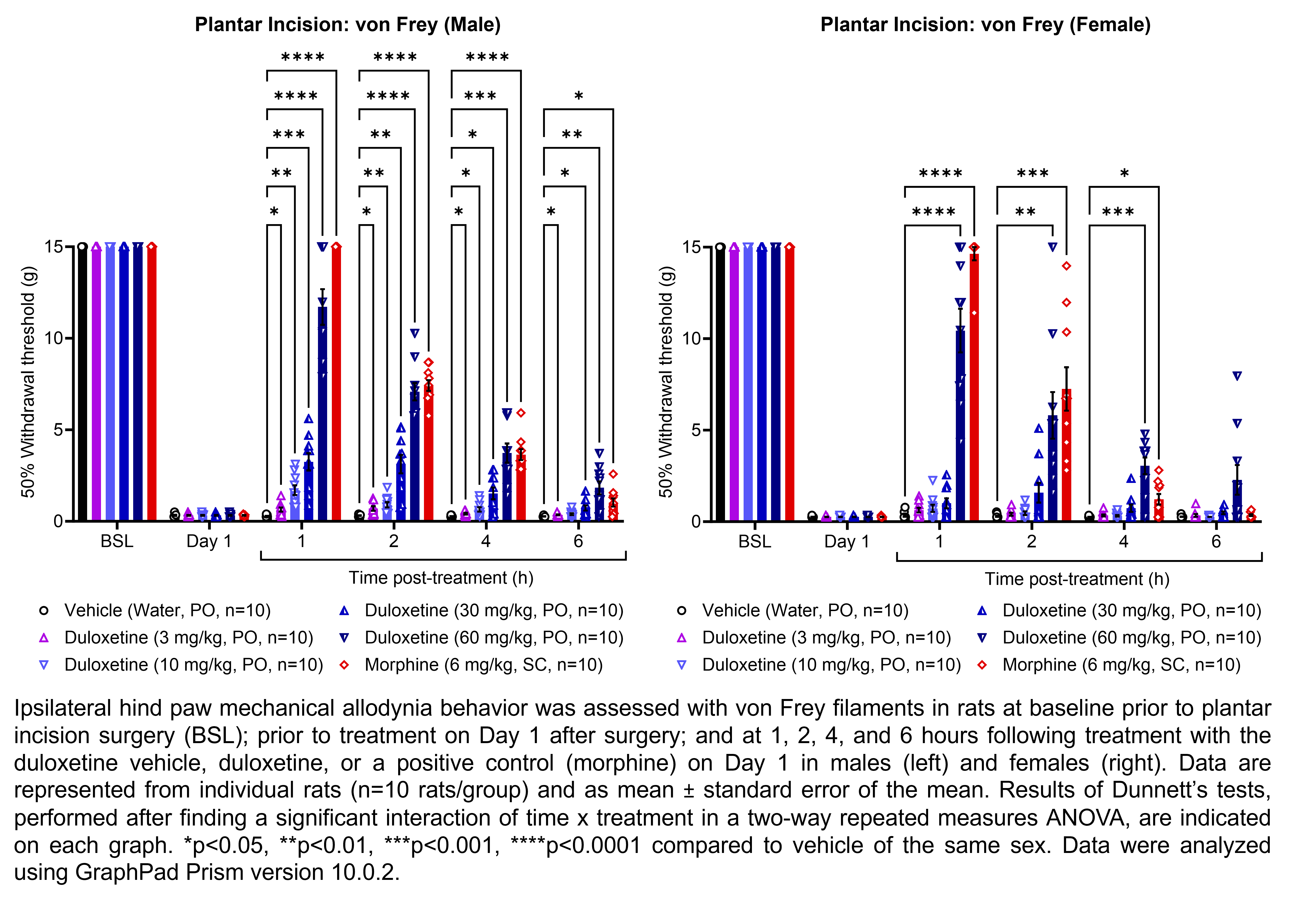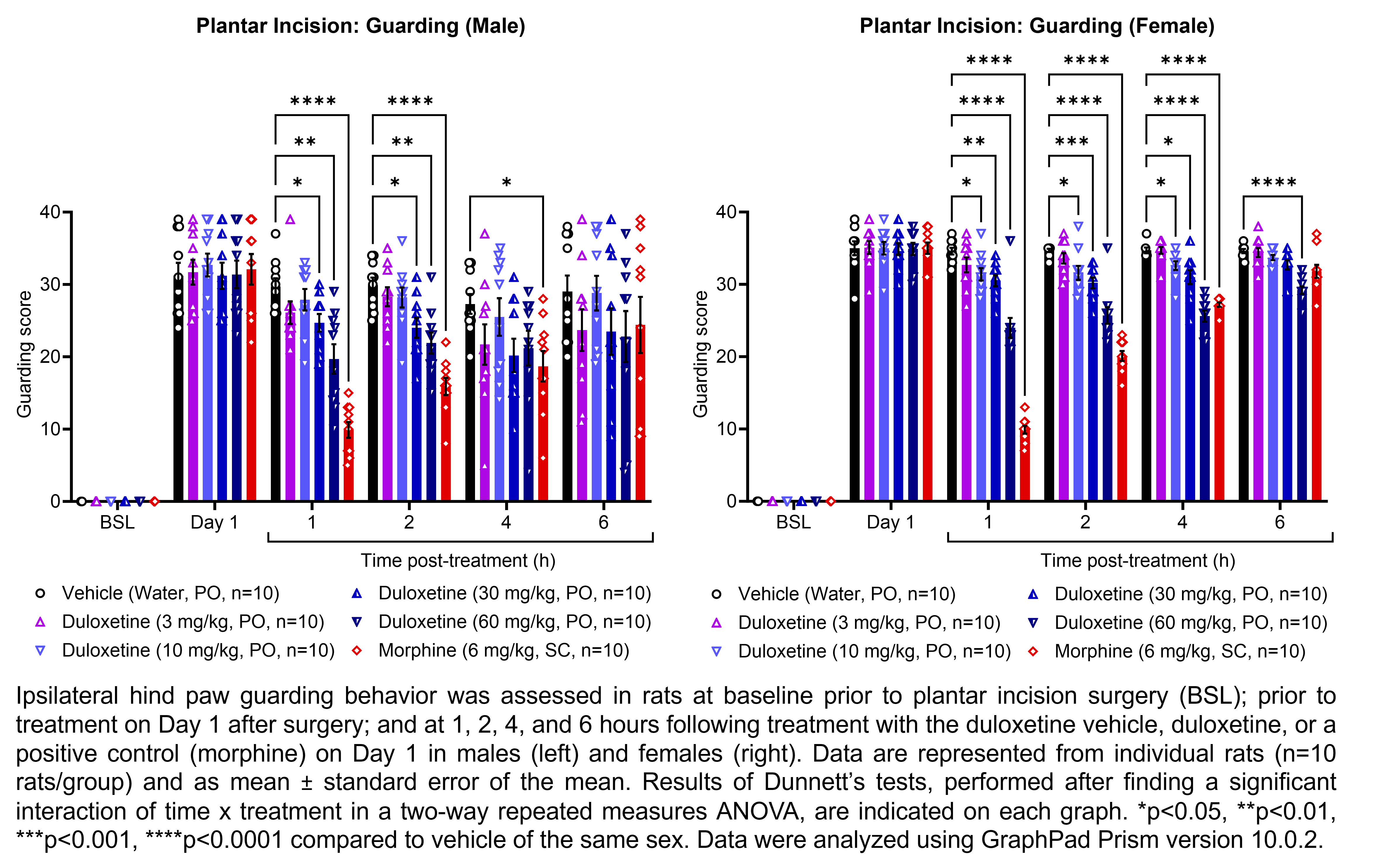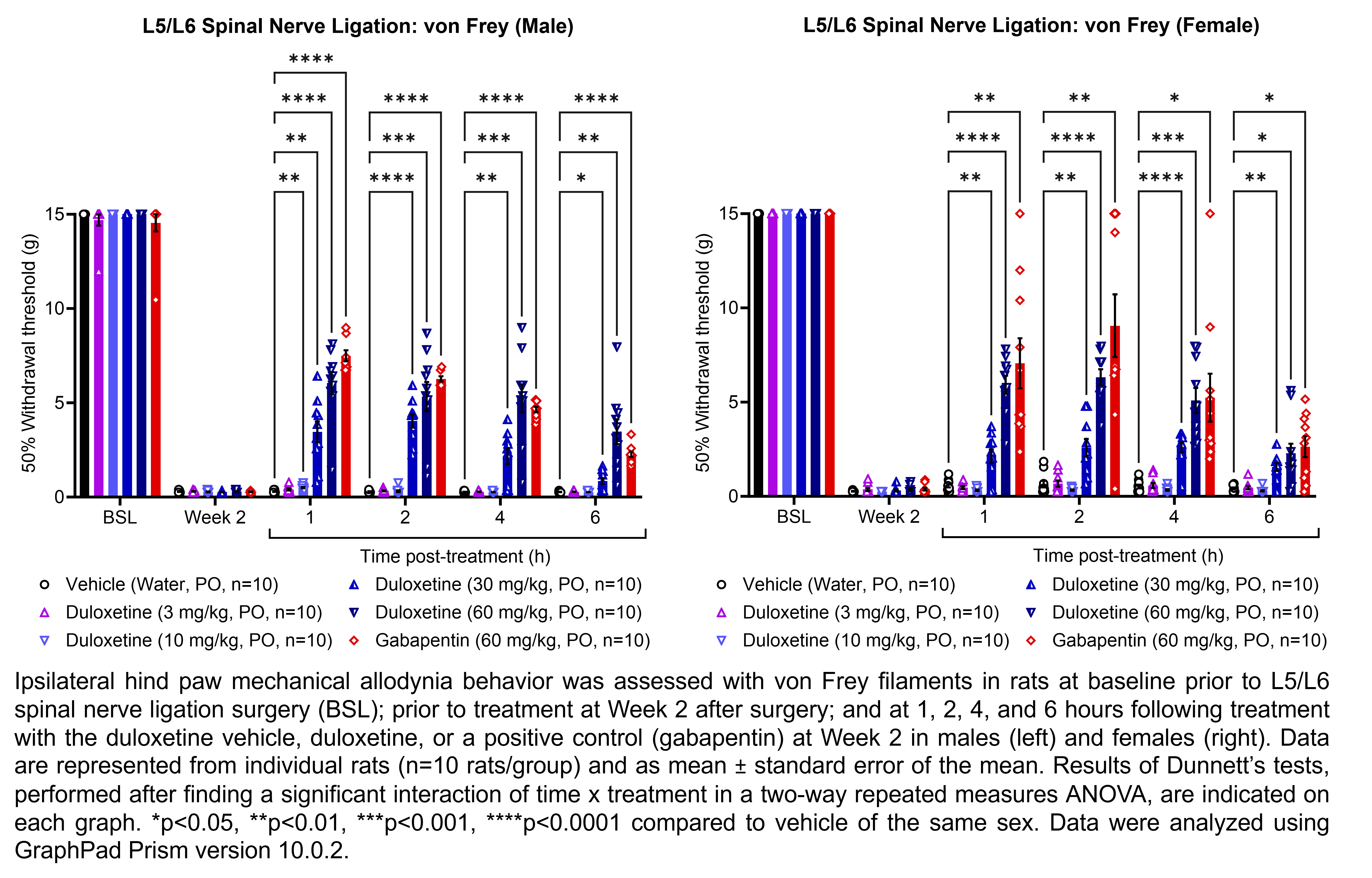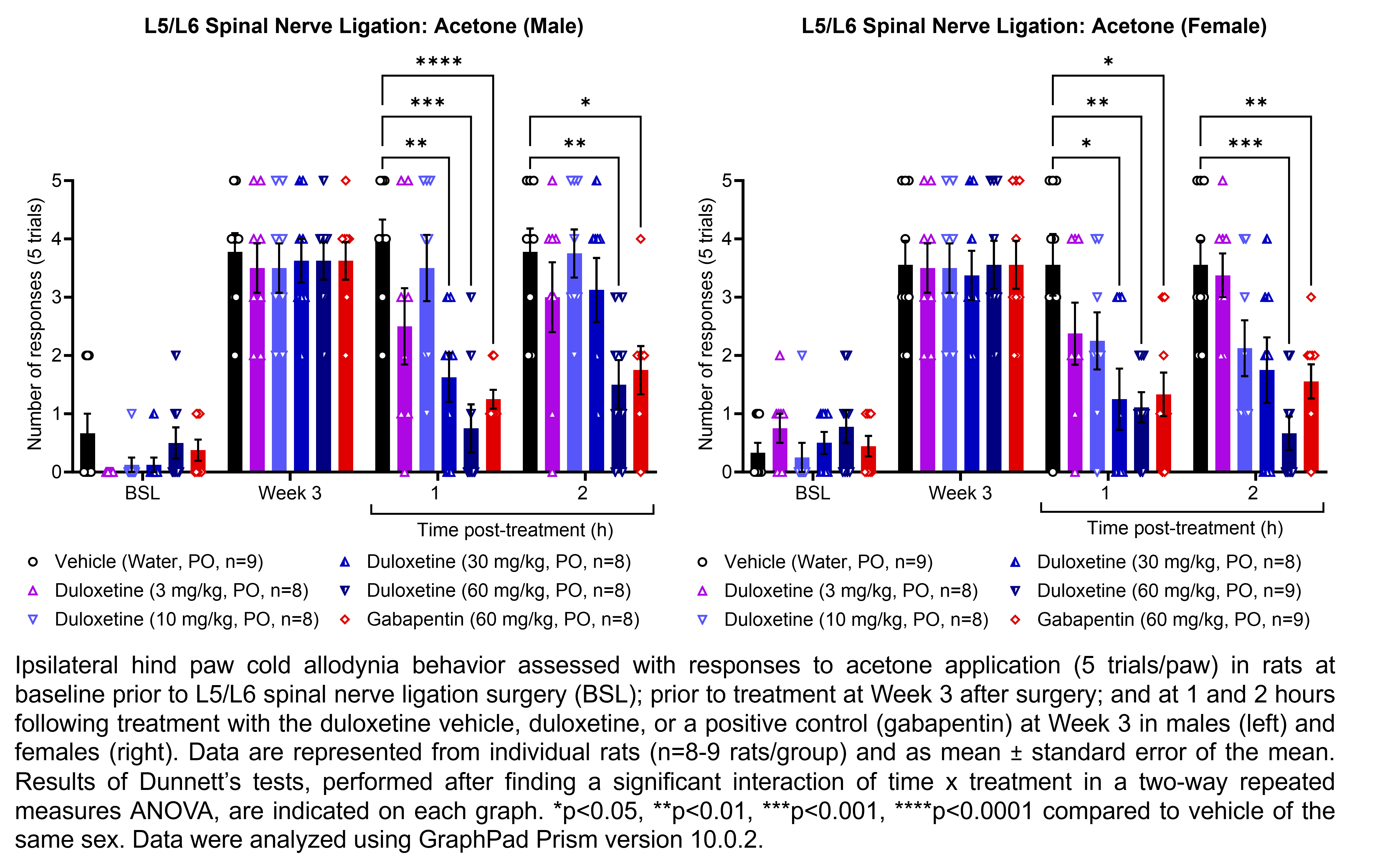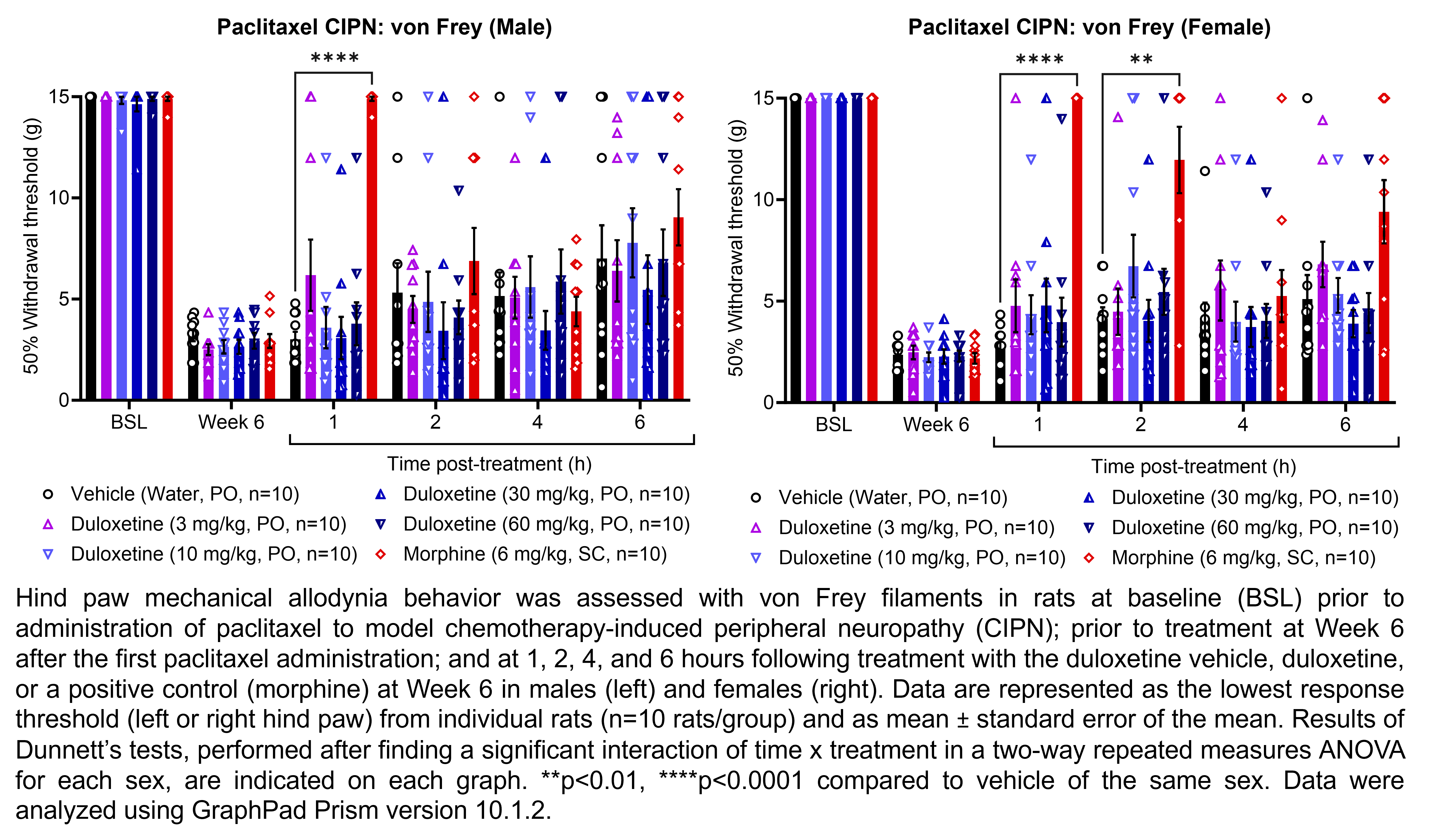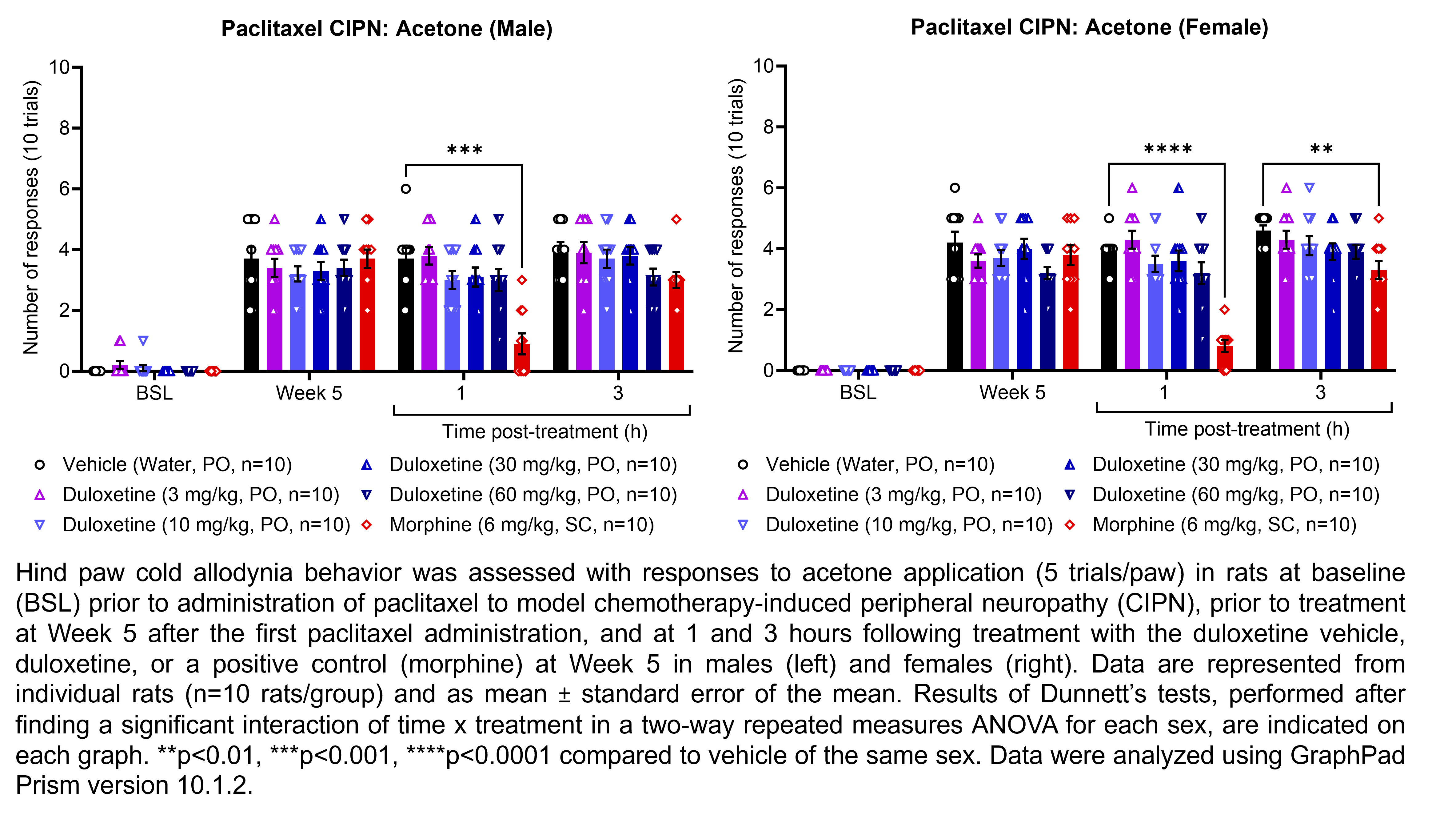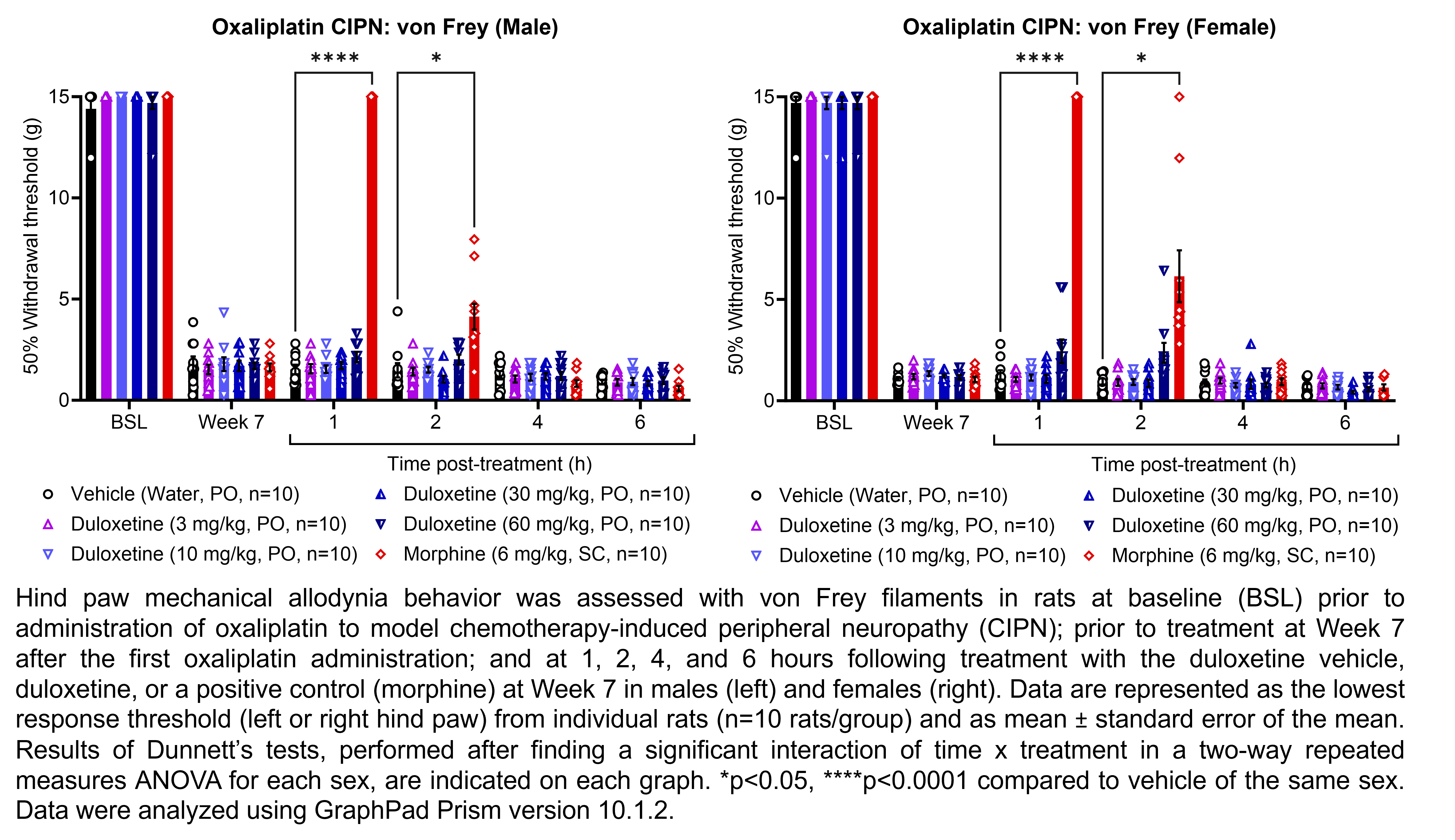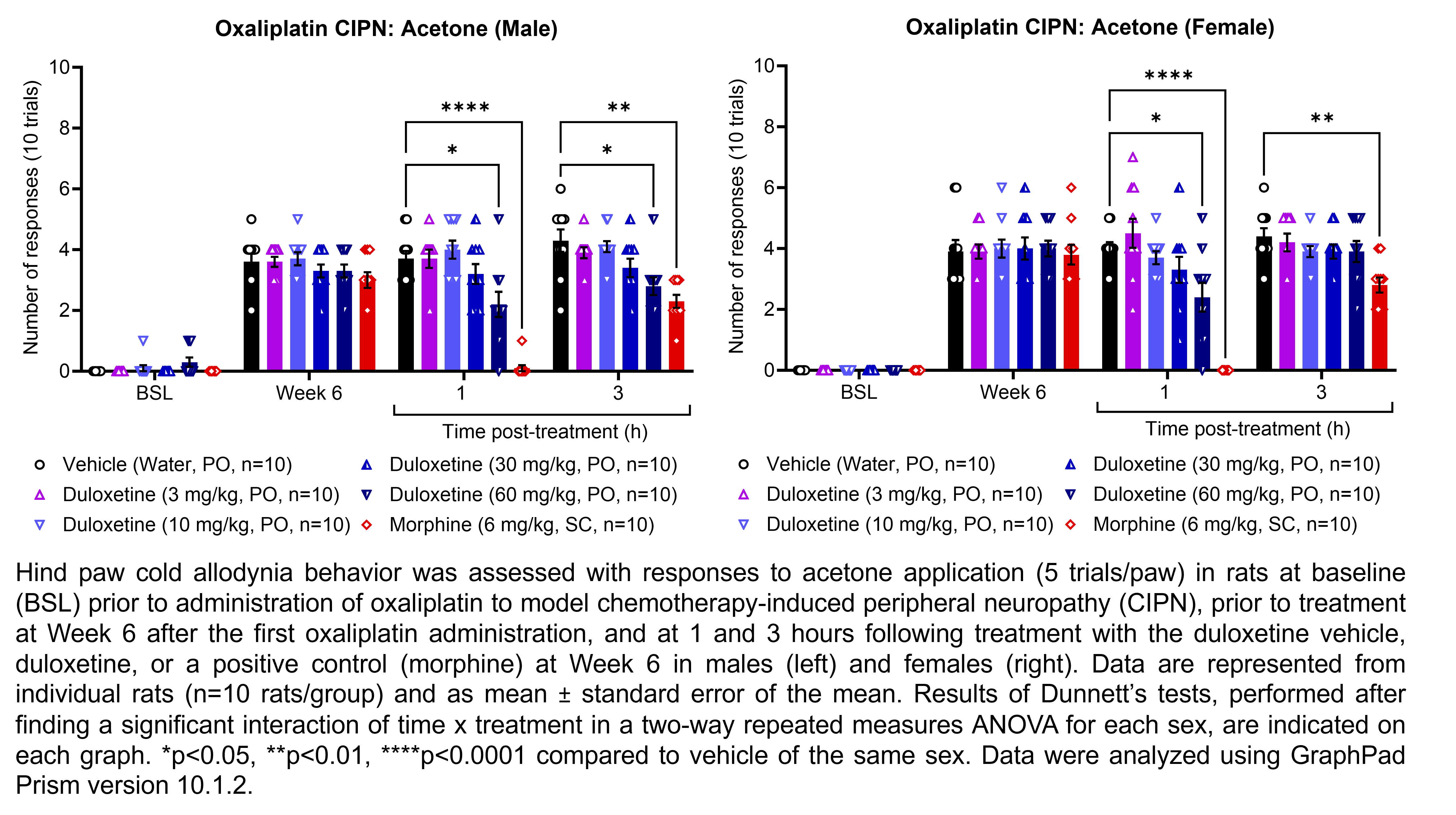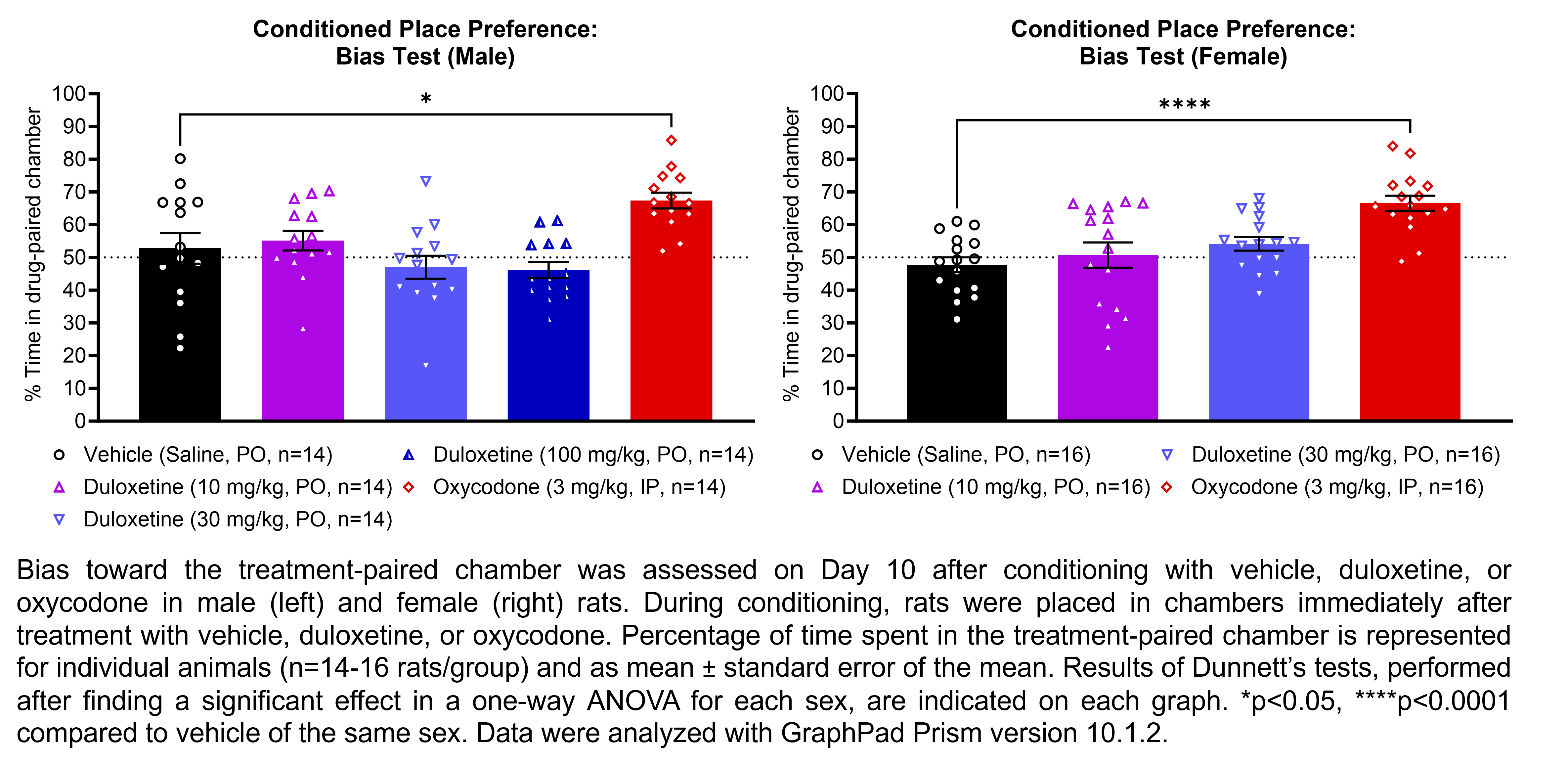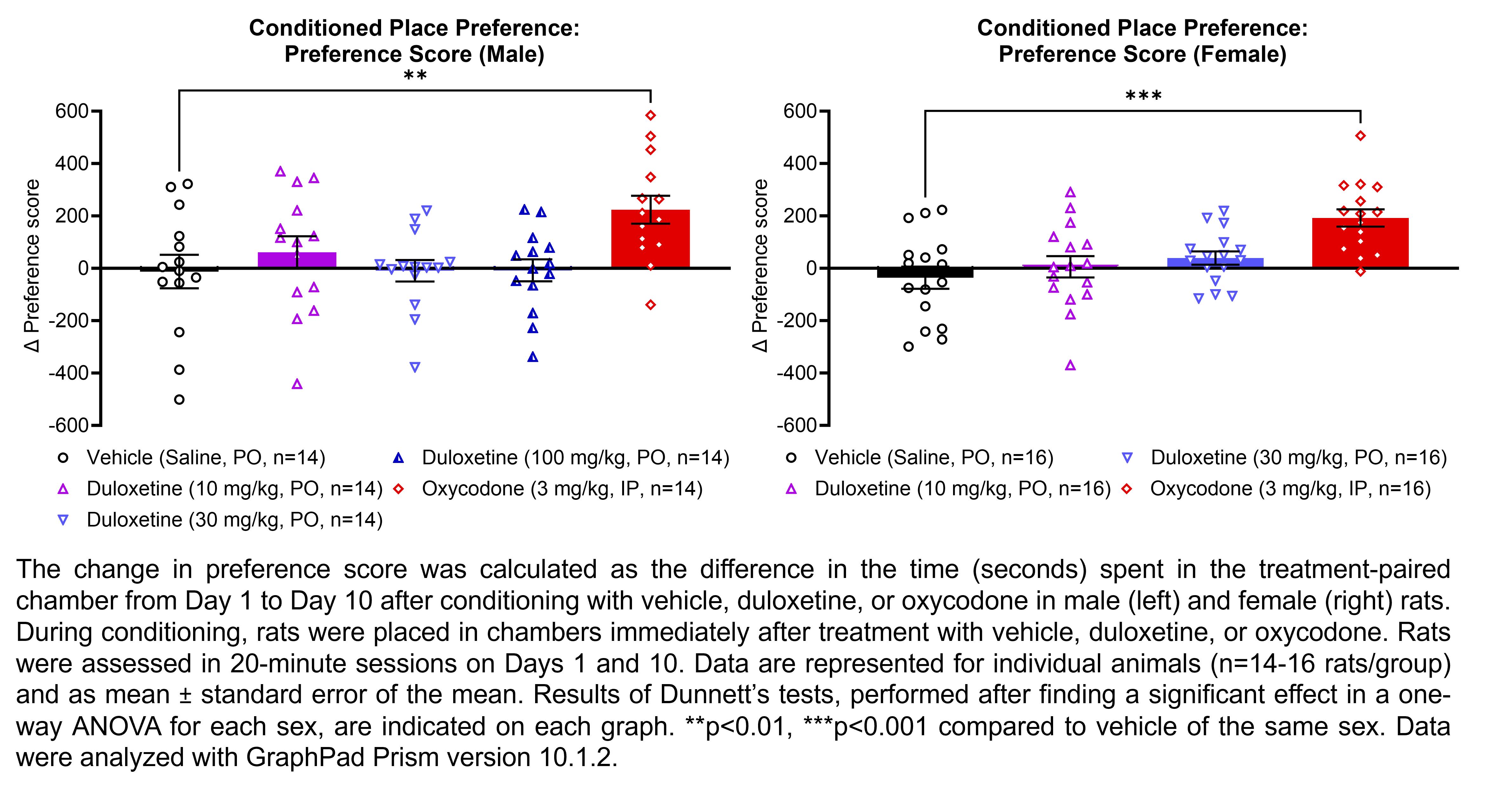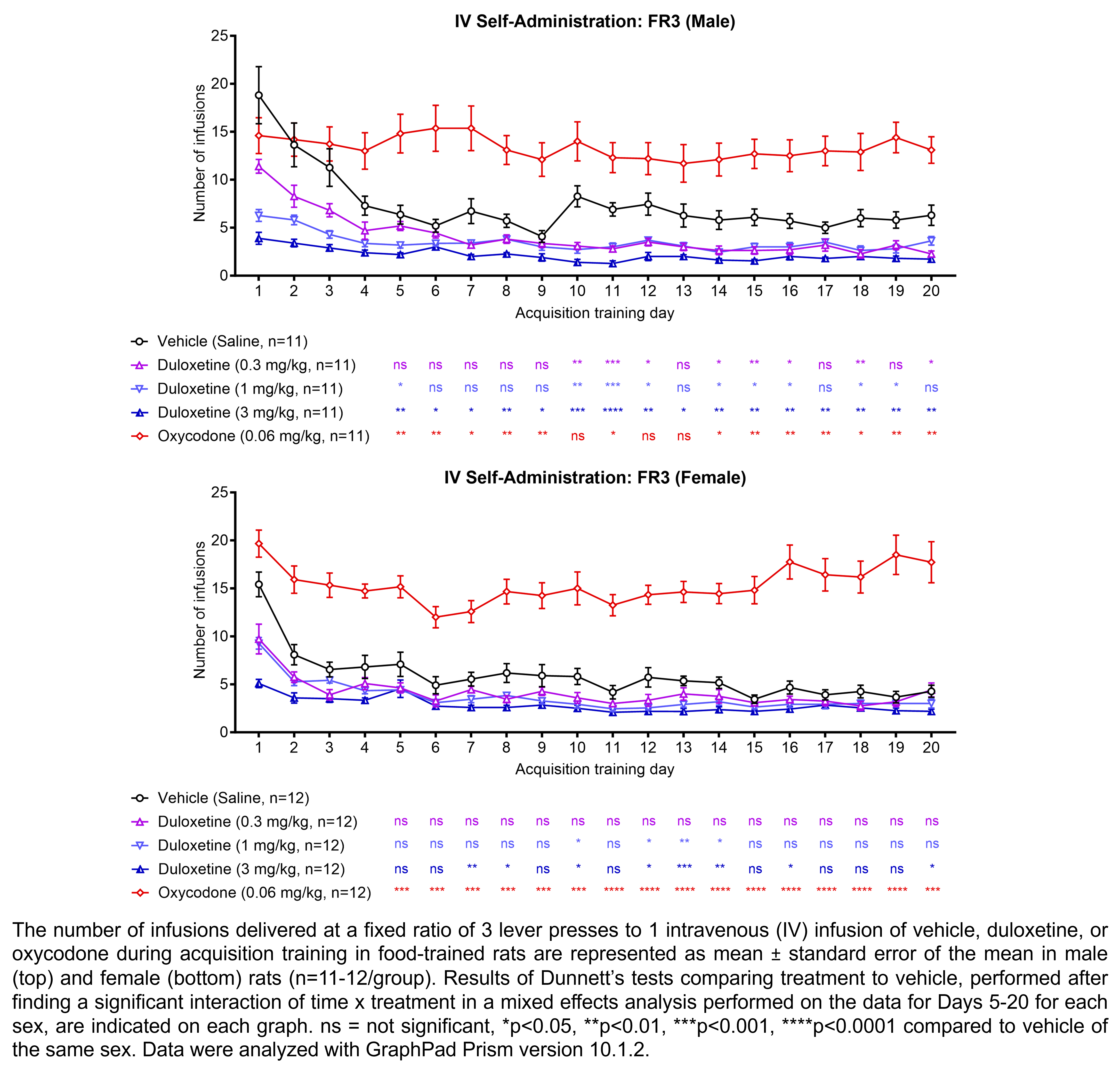DULOXETINE
Formulation
The table below describes the formulation of duloxetine hydrochloride and the controls morphine sulfate, gabapentin, and oxycodone hydrochloride for the following in vivo experiments.
| Experiment(s) | Compound | Dose(s) mg/kg | Correction factor | Dose volume mL/kg | Route of administration | Vehicle | Suspension / Solution |
|---|---|---|---|---|---|---|---|
| Pharmacokinetics | Duloxetine | 3, 30 | 1.12 | 5 | PO | Water | Suspension |
| Pharmacokinetics | Duloxetine | 60 | 1.12 | 2 | PO | Water | Suspension |
| Irwin, Rotarod | Duloxetine | 10, 30, 60, 100 | 1.12 | 5 | PO | Water | Solution |
| Plantar incision, | Duloxetine | 3, 10, 30, 60 | 1.12 | 1 | PO | Water | Solution |
| L5/L6 SNL | |||||||
| Paclitaxel CIPN, | Duloxetine | 3, 10, 30, 60 | 1.12 | 5 | PO | Water | Solution |
| Oxaliplatin CIPN | |||||||
| CPP | Duloxetine | 10, 30, 100# | 1.12 | 1 | PO | Water | Suspension |
| IVSA | Duloxetine | 0.3, 1, 3 | 1.12 | 0.088 mL/infusion | IV | 6% DMSO | Solution |
| mg/kg/infusion | |||||||
| Plantar incision, | Morphine | 6 | 1.33 | 1 | SC | Saline | Solution |
| Paclitaxel CIPN, | |||||||
| Oxaliplatin CIPN | |||||||
| L5/L6 SNL | Gabapentin | 60 | 1.00 | 1 | PO | Saline | Solution |
| CPP | Oxycodone | 3 | 1.12 | 1 | IP | Saline | Solution |
| IVSA | Oxycodone | 0.06 | 1.12 | 0.088 mL/infusion | IV | Saline | Solution |
| mg/kg/infusion |
L5/L6 SNL = L5/L6 spinal nerve ligation, CIPN = chemotherapy-induced peripheral neuropathy, PO = per os, SC = subcutaneous, 6% DMSO = 6% DMSO in saline, #100 mg/kg dose was in males only
Results
Expand and Collapse accordion content
This work was conducted by PsychoGenics Inc. (Paramus, NJ) in collaboration with PSPP, NINDS, NIH under contract # 75N95019D00026. Prescribing information for clinically used controls can be found at labels.fda.gov. Information for icons representing experimental design details can be found through the NINDS Office of Research Quality https://go.nih.gov/Yw2tHGI.



